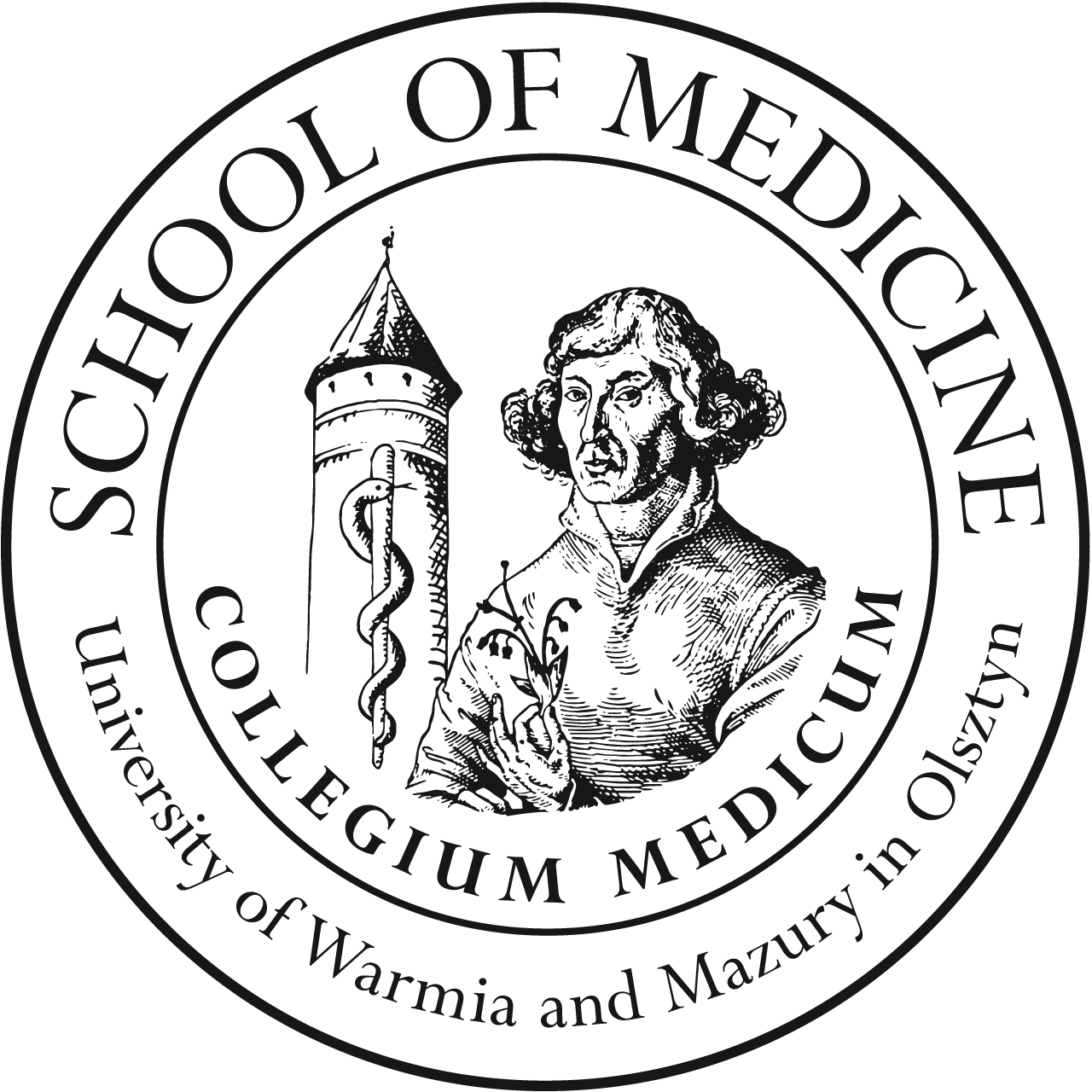CLASS TOPICS
PEDIATRICS
Winter semester 2018/2019
III Year
NEONATOLOGY
Lecture – 15 hours
- Introduction into the pediatrics. General terms related to the child care. Ethical issues in the pediatrics. Diagnostics guidelines and therapeutic standards in the modern pediatrics [1 hour].
- Puberty – physiology. Disorders of puberty development [1 hour].
- Child abuse and neglect. Fetal Alcohol Syndrome. Diagnostics of neuro-developmental disorders: autism and autism spectrum disorders, hyperkinetic/attention deficit disorders (ADHD) [2 hours].
- Most common metabolic disorders in children. Screening of the inborn errors of metabolism
[1 hour]. - General principles of nutrition in healthy children. Breast-feeding, formula feeding [2 hours].
- Malnutrition, obesity. Eating disorders: anorexia nervosa, bulimia nervosa [2 hours].
- Immunization – general principles, schedule. Mandatory and obligatory vaccinations. Overview of adverse events following immunization [2 hours].
- History-taking and physical examinations in pediatrics [1 hour].
- Signs and symptoms in pediatrics. General semiotics in pediatrics and significance of clinical signs and symptoms in children [2 hours].
- Vitamin D – metabolism and clinical significance. Disturbances of calcium and phosphorus homeostasis (rickets, osteoporosis) [1 hour].
Seminar – 10 hours
- Classification of newborn infants by birth weight and gestational age. Prematurity [2 hours].
- Medical assessment of the newborn infant. Adaptation to the extra-uterine life. Physiological and pathological jaundice [2 hours].
- Physiology and pathology of the respiratory system and cardiovascular system [2 hours].
- Neonatal screening, inborn errors of the metabolism [2 hours].
- Skin and subcutaneous tissue of the newborn infant: physiology, most common disorders
[2 hours].
Exercises – 20 hours
ATTENTION!!!
The sequence of topics may change during the semester according to the schedule for Pediatrics. Due to the wide range of material we recommend earlier preparation.
A test, which covers the subject from basic literature, seminars and lectures, will be taken before every practical exercises.
Teachers conducting exercises:
Ewa Szwałkiewicz – Warowicka MD, PhD – The Regional Children’s Specialized Hospital, Clinical Department of Pathology Congenital Malformations of Newborns and Infants.
Maria Kozak MD – The Regional Specialist Hospital, Department of Neonatology and Intensive Care of the Newborn.
Subject 1: Medical history & physical examination of the term newborn – physiological and morphological features of the term babies. Adaptation to extra uterine life. Physiological jaundice. Breast feeding, importance of colostrum, jaundice connected to breast feeding, basic differences with pathological jaundice.
- Taking history (past medical history of the mother, previous pregnancies, current pregnancy, delivery, family history – siblings, prenatal tests).
- Physical examination of the newborn (general state, neurological state, skin, examination of the respiratory and cardiovascular system, assessment of the abdomen and genito-urinary tract, assessment of the congenital defects).
- Description of the physiology and morphology of term newborns.
- Basic knowledge of the day care of the newborn (care of the navel, bathing, vitamins D and K supplementation).
- Knowledge about the benefits from breast –feeding, assessment of the physiological weight loss, assessment of the jaundice – Kramer scale, basic mechanism of the heat loss, transient states (Erthema neonatorum, Ebstein’s pearls, Caput succedaneum).
- Starting of the feeding, basic technique of the breast – feeding.
- Physiological jaundice vs pathological, Kramer scale.
Subject 2: The initial medical evaluation of the newborn infant. Resuscitation of the newborn (term and premature). Maternal diseases and medications influencing condition of the newborn. Feeding of term and pre-term babies.
- APGAR scale assessment.
- Ballard scale assessment.
- Indication for instrumental delivery.
- Management of the newborn directly after the birth (drying, warming, umbilical cord clamping, Crede procedure, Vit. K injection or oral administration).
- Resuscitation of the newborn – general principles (head position, ventilation, chest compressions, drug administration).
- Management of stable vs unstable newborns.
- Maternal diseases and disorders affecting the newborn.
- General management of the hypoglycemia, hypocalcemia, thermoregulation of newborns.
Subject 3: The preterm infant.
- Prematurity – basic information.
- The differences between a pre-term born child and a child born on time.
- Definition of the SGA, IUGR – causes, differences.
- LGA – causes.
- The most common pathology related to the prematurity (ROP, respiratory problems, metabolic problems, IVH, NEC, infections) – basic information.
- Feeding of the premature babies – the role of colostrum.
- The medical transport of a sick newborn.
Subject 4: Development of the cardiovascular system, fetal circulation – changes after birth. Development of the respiratory system. The most common respiratory disorders in the newborn. Apnea.
- Characteristics of the respiratory system of the newborn.
- The most common pathologies of the respiratory system in the newborns – apnea, congenital pneumonia, Respiratory Distress Syndrome, pneumothorax, Meconium Aspiration Syndrome) – clinical assessment.
- Fetal circulation, changes after the birth, neonatal circulation.
- The most common pathologies of the cardiovascular system in the newborns – signs and symptoms of the congenital heart defects, in neonatal period, basic diagnostic procedures in neonatal cardiology). Patent ductus arteriosus. Clinical assessment.


